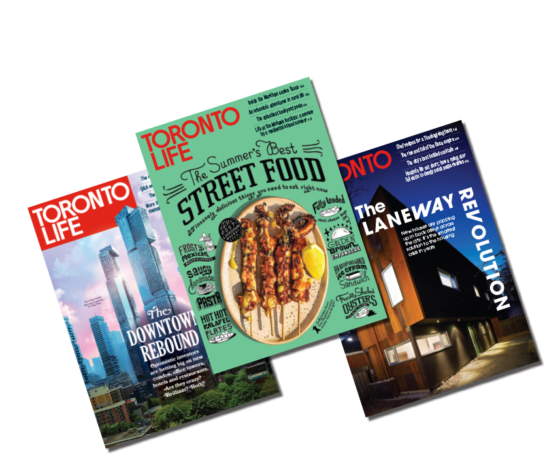
Fun Dip
A beginner’s guide to Toronto’s hot pot restaurants
Chinese hot pot has a long, rich history that goes back a couple of thousand years. According to one origin story, Mongolian horsemen would cook dinner over outdoor fires, their helmets doing double duty as pots and bowls. Today, many countries have their own versions of hot pot—Japan has nabemono; in Korea there’s jeongol—but what unites them is the communal experience: delicious morsels are plunged into a pot of boiling soup stock and shared by everyone at the table.
For first-timers, going to a hot pot restaurant can be intimidating, especially given all the options—broths, proteins, veggies, sauces, spice levels—and the meal’s DIY design. But, before we get into all that, there’s some basic etiquette to be followed, no matter the hot pot place:
Hot Pot Dos and Don’ts
Do go with a group of at least four hungry friends—there’s a lot to try.
Don’t overdress. Instead, wear comfy pants and layers, so you can remove them as you heat up during the meal.
Don’t eat with the communal cooking utensils—that’s a big no-no. Instead, use a separate set of chopsticks.
Do tie back long hair—nobody wants hair in their hot pot.
In the spirit of public service, we visited Vintage the Hot Pot in Markham and waded ecstatically through its epic 70-plus-item menu, learning how to hot pot like a pro.

Basic Instinct
The first step is deciding on a soup base. Hot pot is generally served in a two-chamber vessel that allows diners to enjoy two different bases. The idea here is to choose one spicy and one non-spicy base for variety, but it’s a good idea to consult the table to see who likes it hot. Vintage offers a traditional spicy soup base that adds a kick of flavour—and fire. The mushroom and pork bone broths are lighter and more soothing.
Raw and Order
Proteins—beef brisket, pork belly, lamb—are an essential part of hot pot. The specialty proteins at Vintage include traditional options (beef tripe, octopus balls) and more adventurous ones, like pork intestines and frog. But it’s also important to load up on greens: spinach, watercress and cabbage are all hot pot staples. To prevent the broth from getting too starchy, throw noodles—like thick fish noodles or instant ramen—into the pot last.
Hit the Sauce
Most hot pot restaurants have a station stocked with soy sauce, sesame oil, vinegar, chili oil and garlic, for guests to concoct a dipping sauce. Think of it as a choose-your-own-adventure that involves mixing a small portion of each ingredient to your liking. And you can always fine-tune the mix during the meal.
Get Cooking
Ingredients are brought to the table on small plates. Wait for the broth to simmer before adding anything to the pot. Thinly sliced meats like beef brisket and lamb will take about 30 seconds to cook; some vegetables and seafood take several minutes. A general rule of thumb is to start with meat, followed by veggies, seafood and specialty items. Not sure if an item is ready? Play it safe and let it boil for another 10 to 15 seconds.
Thirst Trap
Things are gonna get spicy, steamy and maybe even a little sweaty, so cold drinks are recommended. Plum juice and soy milk are just a couple of the all-you-can-drink options at Vintage. (Sweet-and-sour plum juice is a great thirst quencher.) Also, hot pot’s sodium content is through the roof, so drinking a lot of water throughout the meal is key.
Sharing Is Caring
Remember that hot pot is a communal experience and there’s no real ownership of what’s in the pot—what you put in can be picked out and eaten by someone else, and vice versa. Be mindful of the variety of items: if there’s only meat in the pot, throw in some greens. Hot pot is all about teamwork.
Vintage the Hot Pot, 3355 Steeles Ave. E., unit 1, Markham, 416-493-5555, xianhezhuang.ca






